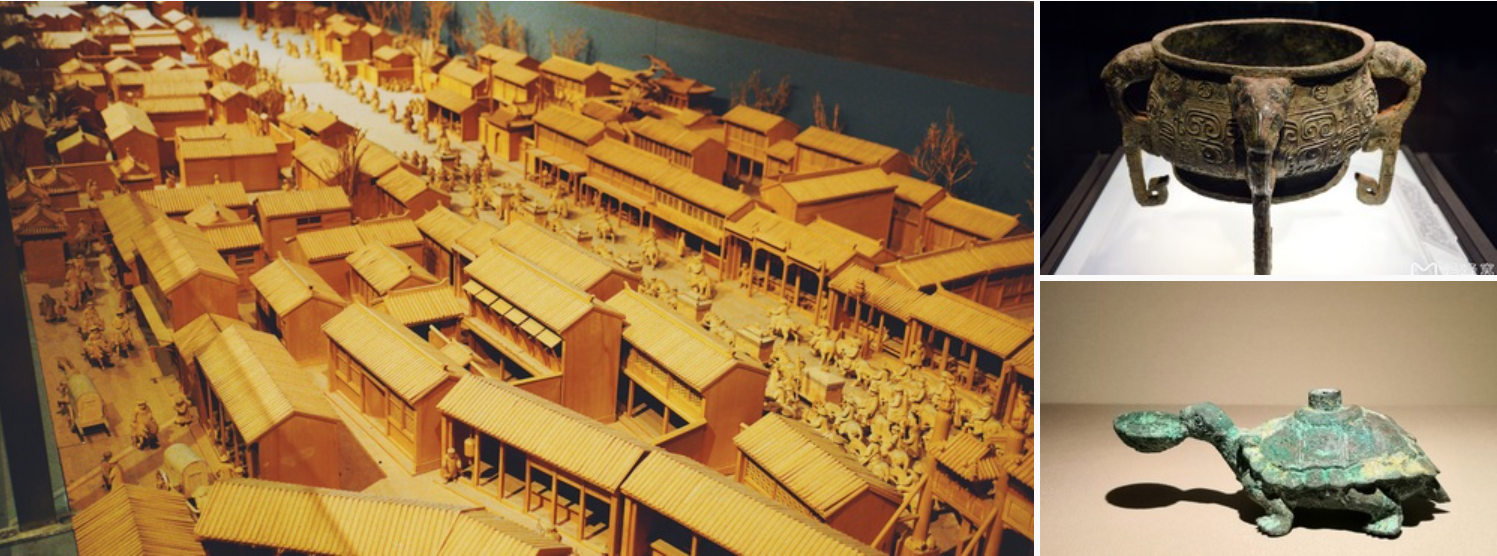Capital Museum
Historical Evolution: The preparatory work of Capital Museum began in 1953, and the preparatory office was established in the Huafang Studio of Beihai Park in February 1954. Due to economic difficulties and other reasons, it went through many setbacks and finally officially opened in the Confucius Temple at No. 13 Guozijian Street, Dongcheng District, Beijing on October 1, 1981. With the development of Beijing and the need for cultural construction, the construction of the new Capital Museum started in 1999, and it was officially completed and opened on May 18, 20061.
Architectural Design: The architectural design concept of Capital Museum is "people-oriented, based on cultural relics, and serving the society", emphasizing the "harmonious unity of the past and the future, history and modernity, art and nature". Its architecture has both national characteristics and a modern sense. The huge roof inherits the profound overhanging eaves of traditional Chinese architecture, the long stone curtain wall symbolizes the ancient city wall of China, the slope of the square inherits the style of ancient high-platform architecture, the Qing Dynasty Danbi is inlaid on the ground outside the north gate of the hall, and there is a Ming Dynasty memorial archway in the hall, reflecting the characteristics of the central axis of the plane of traditional Chinese architecture. The oval bronze exhibition hall protruding from the wall implies that ancient cultural relics emerge from the ground1.
Exhibition Hall Layout :
Basement Floor: There are two square temporary exhibition halls, a and m.
First Floor: There is a temporary exhibition hall b and a digital projection hall.
Second Floor: The square exhibition hall c is the permanent exhibition "Historical and Cultural Chapters of Ancient Beijing", and the circular exhibition hall h is the painting and calligraphy exhibition hall.
Third Floor: The square exhibition hall d is the exhibition of fine cultural relics in Beijing, and the circular exhibition hall i is the painting and calligraphy exhibition hall.
Fourth Floor: The square exhibition hall e has exhibitions of fine art of ancient Buddha statues, fine art of ancient porcelain, and Peking Opera of the museum's collections. The circular exhibition hall j is the exhibition of fine art of Yandi bronze.
Fifth Floor: The square exhibition hall f is the permanent exhibition "Old Beijing Folk Customs Exhibition in the Capital City", and the circular exhibition hall k is the exhibition of fine art of ancient jade.
Sixth Floor: It is the exhibition of cultural relics of ancient Buddhist pagodas in Beijing.

Collection of Cultural Relics: Capital Museum has a rich collection of cultural relics, totaling 124,808 pieces (sets), covering ten categories of cultural relics such as bronzes, ceramics, Buddha statues, jade wares, gold and silver wares, coins, calligraphy, paintings, embroidery, and curios. Among them, the masterpieces include Boju Li, Blue and White Phoenix Head Flat Pot, and Water-Moon Avalokitesvara Statue1.
Exhibitions :
Permanent Exhibitions: There are "Historical and Cultural Chapters of Ancient Beijing", which is divided into ten parts such as "Dawn of Civilization", "Charm of Yanjing and Jizhou", and "Thousand-Year Jicheng" in chronological order, reproducing the historical picture of Beijing and explaining the cultural charm of the capital city. The "Old Beijing Folk Customs Exhibition in the Capital City" shows the life rituals of old Beijing through the dramatic expression method with the elements of hutongs and quadrangle courtyards.
Special Exhibitions: Such as "Exhibition of Cultural Relics of Ancient Buddhist Pagodas in Beijing", "Exhibition of Fine Art of Ancient Porcelain", "Exhibition of Fine Art of Ancient Buddha Statues", "Exhibition of Fine Art of Ancient Jade", "Exhibition of Fine Art of Yandi Bronze", etc., showing the rich historical and cultural heritage and unique artistic charm of Beijing from different angles.
Cultural Activities and Educational Services: Capital Museum often holds various colorful cultural activities, such as temporary exhibitions, academic lectures, and cultural experience activities, allowing the audience to have a deeper understanding of historical and cultural knowledge. At the same time, as a science popularization education base, Capital Museum is equipped with professional interpreters and complete educational facilities, providing a good learning and education place for students and the public. Through activities such as science popularization lectures and educational courses, it helps people establish a correct view of history and cultural protection awareness.
Visit Information :
Opening Hours: Tuesday to Sunday from 9:00 to 17:00 (the admission stops at 16:00 or 17:00, subject to the official announcement). Since September 1, 2024, it is closed on Mondays. In addition, some sessions will be open until late.
Reservation Method: It implements the real-name reservation system. Visitors need to make reservations in advance on the WeChat official account of Capital Museum. No admission is allowed without reservation.
TAG:
